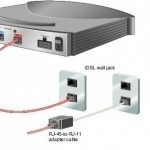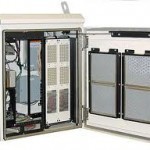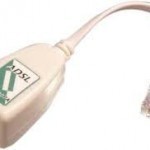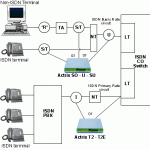ARP is the Address Resolution Protocol. The ARP protocol maps addresses between the Data Link Layer and the Network Layer of the OSI Model. The Data Link layer of TCP/IP networks utilizes MAC addresses; the Network Layer of TCP/IP networks utilizes IP addresses. ARP and RARP The ARP protocol is used to map IP addresses to MAC addresses. RARP, the Reverse ARP Protocol, is used to map MAC addresses to IP addresses. The ARP Cache To reduce the number of ARP requests, every system which implements the ARP protocol keeps Read More
How to Find Your MAC Address
MAC is an acronym for Media Access Control. A MAC address is an address that is given to a network adapter (NIC) that helps a computer to identify it. Since many functions of a computer can be determined by the MAC address on the network adapter, it is important to be able to find your MAC address in case it is requested. Finding a MAC address is, for the most part, simple. However it depends on which operating system you are using. Here are a few tips on how to Read More
PPP (Point-to-Point Protocol)
PPP (Point-to-Point Protocol), is the most widely used method for transporting IP packets over a serial link between the user and the Internet Service Provider (ISP). Although PPP is primarily used over dialup lines, variants such as PPoE (PPP over Ethernet) and PPoA (PPP over ATM) extend PPP to new data-link layer protocols. PPP was designed to enable the transmission of different protocols over one point-to-point link by utilizing encapsulation. Encapsulation is the process of storing packets from the foreign protocol inside PPP frames. In addition to this encapsulation function, Read More
IDSL (ISDN over DSL)

In the modern world of information and computer science, there are many different ways of accessing the Internet and landline telephone service. The most common form of doing so is through a DSL, or Digital Subscriber Line. DSL allows users to physically connect to a vast network of electrical signals that carry information. DSL is used for telephone services and accessing the Internet, though other means of accessing the Internet are also available. This article will define the main types of DSL and will focus specifically on the applications, advantages, Read More
ATM (Asynchronous Transfer Mode)
ATM (Asynchronous Transfer Mode) is a technological system developed for both local and wide area networks (LAN and WAN), and designed to handle data as well as video and voice traffic in real time, all at the same time. The system architecture makes use of switches that set up logical circuits at both ends of the data stream, which ensures unprecedented quality of service (QoS). Unlike conventional telephone switches that sets up dedicated end-to-end circuits, unused bandwidth in Asynchronous Transfer Mode (ATM) can be used for other purposes if needed. Read More
DSLAM (Digital Subscriber Line Access Multiplexer)

Faster connections to the Internet from phone lines are possible through a Digital Subscriber Line Access Multiplexer (abbreviated to DSLAM). The role of this network device is located in the telephone exchanges of providers for the services. The service works by taking advantage of the multiplexing techniques used to connect several Digital Subscriber Lines to a high speed connection which they share. These can be placed along remote areas to provide DSL services to once out of reach locations. These additions may be costly to the telephone companies, but it Read More
How Do ADSL Microfilters Work?

ADSL Internet Access Asynchronous Digital Subscriber Line (ADSL) is a broadband Internet option that is commonly available in many locations. Asynchronous only means that the download speeds and the upload speeds are different (with the upload speeds usually being significantly lower) and provides a fast option to browse the web. Internet access through ADSL requires one of three things. The first will be a dedicated phone line to access the ISP through the ADSL modem which some people do if they do not use a land based phone or simply purchase an Read More
ADSL (Asymmetric Digital Subscriber Line)
ADSL is the acronym for Asymmetric Digital Subscriber Line. ADSL is a loose set of protocols that allows for high speed Internet access over normal copper telephone lines or what is more commonly known as POTS (Plain Old Telephone Service). This is possible because the signals are sent digitally instead of through analog waves. ADSL is known as asymmetric because the download and upload speeds are not symmetrical with download speeds being averagely faster than upload speeds. Upstream data speeds are lower because requests for web pages normally do not Read More
ISDN (Integrated Services Digital Network)

ISDN (Integrated Services Digital Network) is a system of digital phone connections that has been designed for sending voice, video, and data simultaneously over digital or ordinary phone lines, with a much faster speed and higher quality than an analog system can provide. ISDN is basically a set of protocol for making and breaking circuit switched connections as well as for advanced call features for the customers. ISDN is the international communication standard for data transmission along telephone lines and has transmission speeds up to 64 Kbps per channel. The Read More
MTU (Maximum Transmission Unit)
The MTU (Maximum Transmission Unit) is the size of the largest datagram that can be sent over a network. If a datagram is larger than an MTU, the datagram must be fragmented into multiple smaller datagrams. Default MTU Sizes Most network technologies have default MTU sizes which may be changed by the network administrator. Network Default MTU PPP 296 X.25 576 IEEE 802.3 1,492 Ethernet 1,500 FDDI 4,352 4Mb Token Ring 4,464 16Mb Token Ring 17,914 Hyperchannel 65,535 The term PMTU (Path MTU) is sometimes used to describe the MTU Read More


Share on: